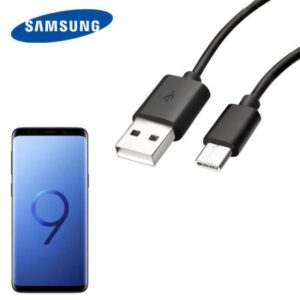Toys are a beloved part of childhood, but what happens when they start showing signs of wear and tear? One common issue many parents face is corrosion on their children’s toys. It’s not only unsightly, but it can also be a safety hazard. But fear not! You don’t have to toss those cherished playthings just yet. In this article, we’ll show you how to remove corrosion from toys, so you can restore them to their former glory and keep the fun alive. Let’s dive in and learn some simple yet effective techniques to tackle this problem head-on.
How To Remove Corrosion From Toys
Toys are an integral part of childhood, providing endless hours of joy and entertainment. However, over time, toys can become victims of corrosion, resulting in rust and deterioration. Corrosion not only affects the appearance of toys but can also pose a health risk if children come into contact with corroded parts. If you’re a parent or have toys of sentimental value that you want to preserve, it’s essential to know how to remove corrosion effectively. In this article, we’ll explore various methods to help you restore your toys to their former glory.
Understanding Corrosion and its Causes
Before diving into the removal techniques, it’s crucial to understand what corrosion is and its underlying causes. Corrosion is a natural process that occurs when metal is exposed to moisture and oxygen over an extended period. Toys made of metal or those with metal components are particularly susceptible to corrosion. The main causes of corrosion in toys include:
1. Moisture: Toys left outdoors or stored in damp environments are more likely to develop corrosion due to increased exposure to moisture.
2. Lack of protection: Toys that lack protective coatings or have worn-out coatings are more prone to corrosion.
3. Environmental conditions: Toys exposed to extreme temperatures, salty air, or acidic substances are more susceptible to corrosion.
Tools and Materials Needed
Before embarking on the corrosion removal process, gather the following tools and materials:
- Gloves
- Protective eyewear
- Vinegar
- Lemon juice
- Baking soda
- Toothbrush or soft-bristled brush
- Clean cloth or sponge
- Rust converter
- Primer
- Paint
- Clear coat (optional)
Safe Handling and Preparation
When dealing with corroded toys, safety should be a priority. Follow these steps to ensure your safety and the safety of others:
- Put on gloves to protect your hands from any chemicals or sharp edges.
- Wear protective eyewear to shield your eyes from any potential debris or cleaning solutions.
Now that you’re properly equipped, let’s dive into the different methods of removing corrosion from toys.
Method 1: Vinegar
Vinegar is a versatile household ingredient that can effectively remove corrosion from toys. Follow these steps:
- Begin by dismantling the toy as much as possible. Remove any batteries or electronic components, if applicable.
- Fill a container with enough vinegar to completely submerge the corroded parts of the toy.
- Place the corroded parts into the vinegar and let them soak for at least 1-2 hours. For heavily corroded toys, overnight soaking may be necessary.
- After soaking, use a toothbrush or soft-bristled brush to scrub away the loosened corrosion gently.
- Rinse the toy parts thoroughly with water and dry them completely before reassembling the toy.
Method 2: Lemon Juice
Lemon juice, with its acidic properties, can be an effective natural solution for removing corrosion. Here’s how to use it:
- Follow the same steps as in Method 1 to prepare the toy and remove any batteries or electronic components.
- Squeeze fresh lemon juice into a container that can accommodate the corroded parts.
- Place the corroded parts into the lemon juice and let them soak for a few hours or overnight, depending on the severity of the corrosion.
- Using a toothbrush or soft-bristled brush, scrub away the corrosion gently.
- Rinse the toy parts thoroughly with water and dry completely before reassembling.
Method 3: Baking Soda Paste
Baking soda is a gentle abrasive that can effectively remove corrosion without damaging the toy’s surface. Follow these steps:
- Prepare a paste by mixing baking soda with a small amount of water. The consistency should be similar to toothpaste.
- Apply the baking soda paste to the corroded areas of the toy.
- Gently scrub the corroded parts using a toothbrush or soft-bristled brush.
- Rinse the toy parts thoroughly with water and dry completely before reassembling.
Method 4: Rust Converter
Rust converters are commercial products designed specifically to convert rust into a stable compound. Here’s how to use a rust converter:
- Follow the necessary safety precautions mentioned earlier in the article.
- Apply the rust converter directly to the corroded areas of the toy, following the product’s instructions.
- Allow the rust converter to dry as recommended by the manufacturer.
- If instructed, use a primer suitable for the toy’s material to prepare the surface for painting.
- Paint the toy with suitable paint, matching its original color or your desired finish. Apply multiple thin coats for better coverage.
- Optionally, apply a clear coat to protect the painted surface from future corrosion.
Maintaining Corrosion-Free Toys
Once you’ve successfully removed the corrosion from your toys, it’s essential to take preventive measures to avoid future corrosion. Here are some tips:
- Store toys in a dry, climate-controlled environment.
- Apply a protective coating, such as clear enamel, to metal toys to prevent direct exposure to moisture and oxygen.
- Regularly inspect and clean toys, especially those stored outdoors, to catch any signs of corrosion early on.
- Keep toys away from harsh chemicals or substances that can accelerate corrosion.
With these measures in place, you can ensure that your toys remain corrosion-free and ready for play for many years to come.
In conclusion, knowing how to remove corrosion from toys is crucial for preserving their appearance and ensuring the safety of children. Whether you opt for natural solutions like vinegar and lemon juice or rely on rust converters, the key is to act promptly and follow the necessary safety precautions. By doing so and implementing preventive measures, you can extend the lifespan of your toys and create a safe play environment for kids. So roll up your sleeves, gather your tools, and start restoring those toys to their former glory!
Frequently Asked Questions
How do I remove corrosion from toys?
To remove corrosion from toys, you can follow these steps:
Can vinegar be used to remove corrosion from toys?
Yes, vinegar can be an effective solution to remove corrosion from toys. You can soak the corroded parts in a mixture of equal parts vinegar and water for a few hours. Afterward, scrub off the corrosion using a toothbrush or a soft-bristled brush.
What other household items can I use to remove corrosion from toys?
Aside from vinegar, you can also use lemon juice or baking soda mixed with water as alternatives to remove corrosion from toys. Lemon juice contains citric acid, which can help dissolve the corrosion, while baking soda acts as a gentle abrasive to scrub off the corrosion.
Is there a specialized product available to remove corrosion from toys?
Yes, there are specialized rust removers available in the market that can be used to remove corrosion from toys. These products are formulated to dissolve rust and corrosion effectively. However, always ensure that the product is safe to use on the material of the toy before applying it.
How can I prevent toys from corroding in the first place?
To prevent toys from corroding, it’s essential to keep them clean and dry. After playtime, make sure to wipe down the toys with a dry cloth and store them in a dry environment. Avoid exposing the toys to moisture for extended periods, as this can promote corrosion.
Final Thoughts
Corrosion on toys can be a frustrating issue, but there are effective ways to remove it. Start by creating a vinegar and water solution to soak the toys, allowing the vinegar’s acidic properties to break down the corrosion. Scrubbing the toys gently with a toothbrush or sponge can help remove any remaining residue. For tougher stains, using a mixture of baking soda and water can provide extra cleaning power. Remember to dry the toys thoroughly to prevent future corrosion. By following these simple steps, you can successfully remove corrosion from toys and restore them to their former glory.



